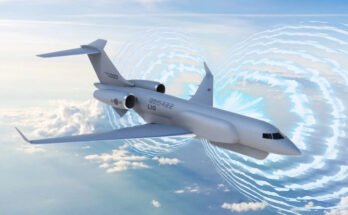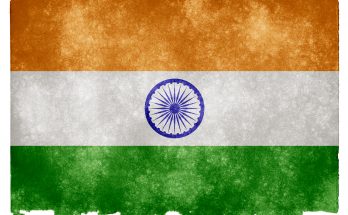By Dan Darling, Forecast International
Recent statements made by senior Indian Ministry of Defense (MoD) officials to local media regarding a potential $20 billion procurement of 126 new-build French Dassault Rafale jet fighters as being “effectively dead” have led to confusion and speculation . Whether or not these statements are an accurate portrayal of the mindset in the Defense Ministry or a negotiating ploy remains to be seen, but there is little doubt that in terms of finalizing a deal, crunch time is fast approaching.
India chose the Rafale over the Eurofighter Typhoon on January 31, 2012, following a two-round competition to meet the Indian Air Force’s (IAF) medium multi-role combat aircraft (MMRCA) requirement. The Rafale won out over its competitors due to a variety of reasons, including favorable technology transfer guarantees, the aircraft’s overall performance, and India’s longstanding defense trade relationship with France.
But the most important reason came down to the Dassault’s lower life-cycle cost estimate.
Now, after three years of frustrating negotiations (for both sides), the culmination point is fast approaching – with no deal signed.
Under the terms of the MMRCA tender, the first batch of 18 aircraft is to be produced by the selected vendor and arrive in India in flyaway condition, with the remaining 108 units to be license-produced by India’s state-owned aerospace giant Hindustan Aeronautics Ltd (HAL).
While Dassault has long been concerned with whether India’s defense industrial sector has the capacity to supply the percentage of parts (30-50 percent) that are required under the contract – and whether HAL is technologically capable enough for it to partner with on such an advanced aircraft – the Indian side, too, has voiced discomfort.
On December 30, 2014, India’s Defense Minister Manohar Parrikar admitted to complications in the negotiations and began outlining alternatives to meet the IAF’s combat aircraft requirements.
Initially France publicly downplayed any gap in the negotiations, but by early February its defense procurement chief, Laurent Collet-Billon, was pushing back on India, stating Dassault would not be responsible for the whole contract. Referring to the original Request for Proposals (RFP) issued by India, Collet-Billon stated that Dassault would not assume full liability for the HAL-produced Rafales.
For its part, India believes it was misled by Dassault’s commercial bid. Over the course of three years of fleshing out an agreement, India’s contract negotiation committee (CNC) has discovered that the Dassault bid actually came in over the cost of that of the Eurofighter Typhoon option, rather than below as was initially believed. India’s inexperience with factoring life-cycle costs (the cost of buying, flying, maintaining, and refitting an aircraft over a 30-40 year period) plus alleged incomplete details on the part of Dassault apparently led to an incorrect conclusion in 2012.
The risk for India now is that if it does not reach an agreement with Dassault on a Rafale purchase, the original tender (issued in 2007) will be cancelled. This would push the entry date for a new IAF fighter to replace the aging fleet of Bisons further out into the future and – barring a gap-filling, supplemental order of Sukhoi Su-30MKI Flankers or indigenous Tejas Mark 1 fighters – render the service short-handed.
As for Dassault, missing out on two of the most prized global fighter contract opportunities (Brazil’s FX-2 order being the other) in a span of three years might prove painful. But the company just notched a 24-unit order with Egypt, providing it with a little relief, and is reportedly approaching another agreement with Qatar for up to 36 of its Rafales.
Nonetheless, the Indian MMRCA contract represents the big prize for the world’s jet fighter manufacturers.
Despite the flurry of reports regarding the Indian Rafale deal, there remains a sliver of hope that an agreement will ultimately be reached. Denying that the center-right National Democratic Alliance (NDA) government has delayed reaching a conclusion on a deal, Defense Minister Parrikar has stated that the final report of the CNC will be provided in early March. In the meantime, Parrikar has emphasized, there is no Plan B alternative in the offing for India.
Indian defense procurement is notoriously slow and winding, suffering from bureaucratic red tape, indecision at the official level, disagreement between the military and the MoD, and – quite often – charges of corruption followed by lengthy investigations. The end result has more often than not resulted in a cancelled tender, a foreign vendor blacklisted from participating in future Indian defense bids, and a capabilities shortcoming for the Indian armed forces.
Should the MMRCA project fall apart, it would represent just the latest in a long line of such aborted or bungled procurement efforts.
But as the clock continues to tick, the deal is not dead just yet. French aircraft engine manufacturer Snecma has signed a Memorandum of Understanding with HAL for the establishment of a joint venture for the production of aero-engine parts (initially focusing on Snecma’s M88 engine, which powers the Rafale).
Then there is the longstanding relationship between Dassault and the Indian military. From its Ouragan (Toofani, or Hurricane, in Indian service) delivered in 1953 through its more recent Jaguar and Mirage 2000, Dassault has long been a crucial provider of combat aircraft to India’s armed forces.
The big question now is whether the Indian side – which continues adhering to the government’s “Make in India” industrial campaign – is willing to ease its demand that Dassault guarantee the HAL-produced Rafale aircraft. If not, it could be back to square one for the Ministry of Defense as it seeks to patch an emerging fighter capabilities gap. Meanwhile, the Indian Air Force will be left flying its MiG-21bis fighters – a fleet originally slated for retirement in 2014 – out to 2025.
Pressure on both sides to reach a deal is mounting, but at this point in time a happy conclusion appears farther rather than near.
For 50 years, Forecast International intelligence reports have been the aerospace and defense industry standard for accurate research, analysis, and projections. Our experienced analysts compile, evaluate, and present accurate data for decision makers. FI's market research reports offer concise analysis of individual programs and identify market opportunities. Each report includes a program overview, detailed statistics, recent developments and a competitive analysis, culminating in production forecasts spanning 10 or 15 years. Let our market intelligence reports be a key part of reducing uncertainties and mastering your specific market and its growth potential. Find out more at www.forecastinternational.com



